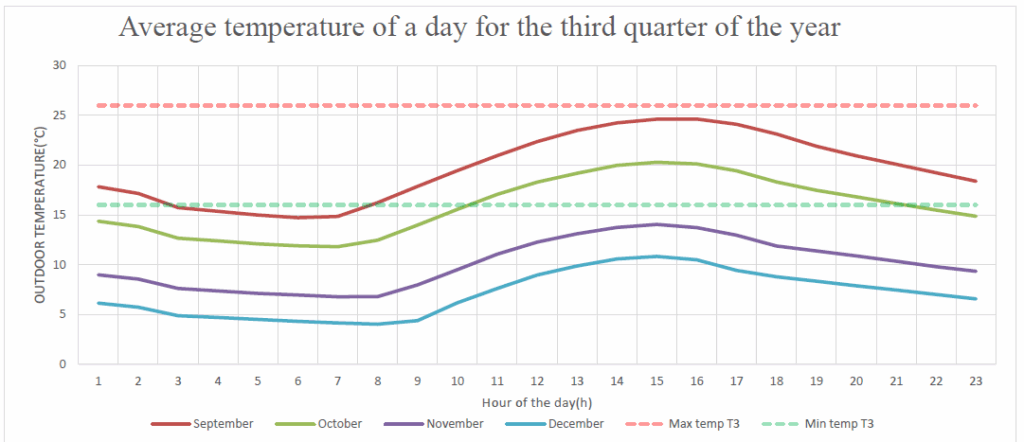In today’s greenhouse industry, one thing is certain: success no longer depends solely on the green thumb of the grower. Instead, it is increasingly driven by smart, data-based decisions. With shifting weather patterns, rising costs, and growing demand for year-round production, understanding the local climate is more important than ever.
Optimized climate and light recommendations help growers fine-tune light exposure for better yields, quality, and energy efficiency because;
- Support Optimal Photosynthesis
-Light drives growth, flowering, and fruiting. Tailored advice ensures crops get what they need.
- Improving Yield Quality & Consistency
-Stable light levels result in uniform, high-quality crops thqt meet market demands.
- Efficient Use of Resources
-Optimized lighting cuts energy waste while boosting productivity- balancing natural and artificial light use.
- Seasonal Light Adjustments
-Light varies year-round. Historical Data helps adjust lighting and shading strategies for steady performance.
Optimized Light= Stronger Crops & Higher Efficiency
With data driven light strategies, growers can boost yield, improve quality, and reduce costs thus maximizing greenhouse performance.
Weather Conditions: Undertsanding the External Climate
Optimizing Light & Temperature Control
– More clear days? Add Shading. More Overcast Days? Use supplemental Lighting. This helps in fine-tuning your climate strategy.
Efficient Water Management
-rainy periods reduce irrigation needs; dry spells require more water. Weather pattern guide smart water use!
Enhances Disease Prevention
-humid, cloudy weather raises fungal disease risks. Anticipate and adjust ventilation and treatment accordingly.
Improving Energy Efficiency
– Matching climate systems with weather trends cuts energy waste and ensures optimal growing conditions.
Long term weather insights help anticipate seasonal changes, refine climate control, and lower costs= healthy and happy crops and more efficient production.
Outside Temperature: : Managing Climate for Stable Crop Growth
- Maintaining Ideal Growth Conditions
- Adapting to Seasonal Changes & Extremes
- Efficient Energy & Climate Management
- Boosting Crop Resilience
By analysing average and extreme temperatures, growers can maintain stable conditions, cut energy use, and strengthen crop resilience for healthy, high-yielding productions

Relative Humidity: Managing Moisture for a Stable Greenhouse Climate
- Maintaining Ideal Humidity Levels
- Protecting against Diseases and Pest
- Improving Resource Efficiency
- Adapting to Seasonal Changes

Tracking external humidity helps growers maintain ideal conditions, prevent disease, and reduce energy use- supporting healthier crops and efficient productions
Solar Radiation: Understanding Solar Radiation for Smarter Greenhouse Management
- Optimizing Light Management
- Better Temperature Control
- Reducing Energy Costs
- Anticipating Low-Light Conditions

By leveraging historical data, meaning having the ability to make informed decisions that improve light management, optimize energy use, and maintain a stable climate – stronger, healthier crops and higher yields.
DLI: Daily Light Intergal
DLI exceed crop requirements, leading to heat stress, water loss, and inefficient photosynthesis. On the other hand, in winter, DLI declines its optimal growth leading to slow progress of growth, heating, and lighting strategies.

Wind Direction: Optimizing Ventilation and Structural Protection
- Designing Optimal Ventilation
- Enhancing Temperature Management
- Protecting Against Wind Exposure
- Adapting to Seasonal Changes

By monitoring wind direction trends, growers can improve airflow, lower energy costs, and better protetcion for the crops. Ensuring a stable and efficient greenhouse operation.
Wind Speed: Safeguarding your Greenhouse & Optimizing Climate Control
- Protecting Structural Integrity
- Enhancing Ventilation Efficiency
- Maintaining Temperature Stability
- Adapting to Seasonal Wind Changes

With wind inisghts, growers can strengthen structures, optimize airflow, and maintain a stable climate. This improves crop protection and energy efficiency.
For more Information: Discover Hortinergy!

